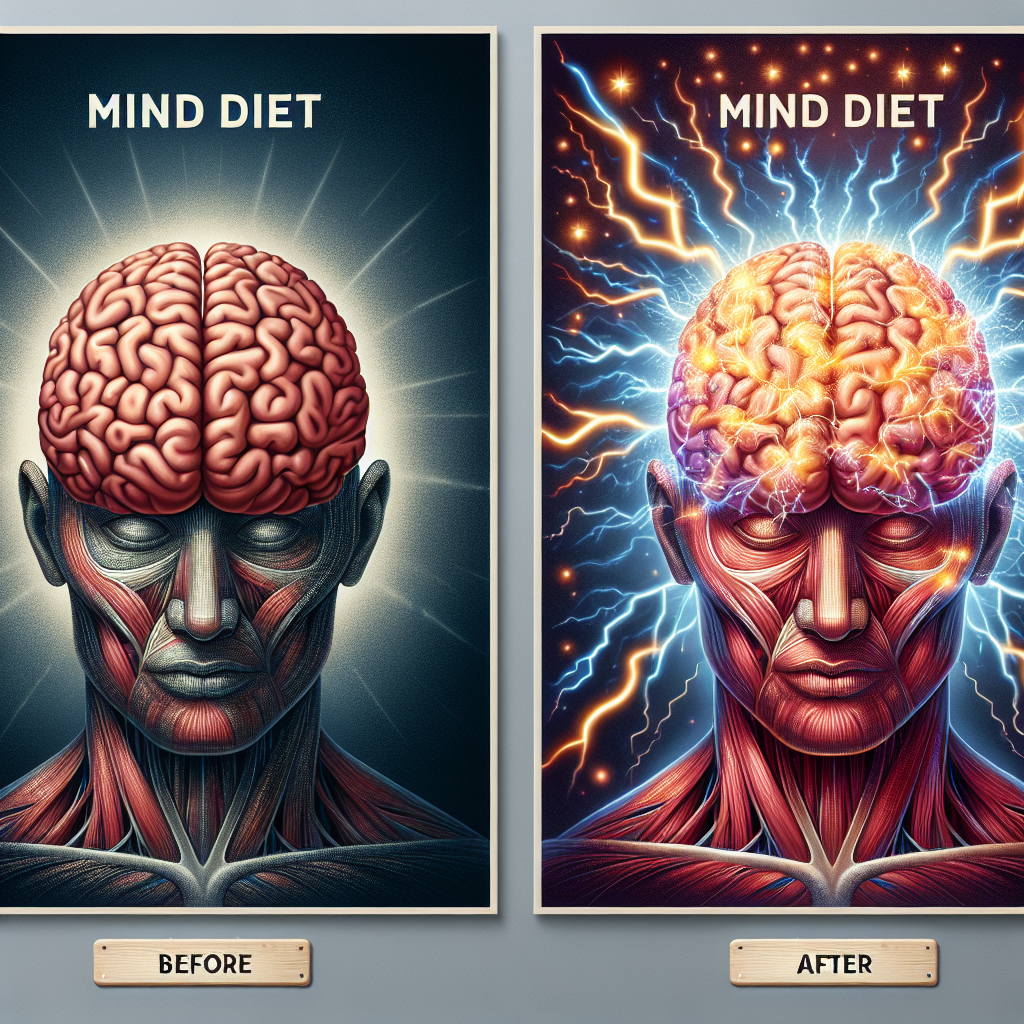
The Mind Diet Effect: Brain Scans Reveal Cognitive Transformation
In the quest to improve mental clarity and safeguard long-term brain function, the science-backed MIND diet is gaining considerable attention. But how exactly does what we eat shape the brain?
Thanks to advanced brain imaging technologies such as functional magnetic resonance imaging (fMRI) and positron emission tomography (PET) scans, researchers can now observe real-time changes in brain structure and performance after adopting the MIND diet.
“These aren’t just assumptions — we’re seeing measurable changes in the brain,” says Dr. Martha Morris, a nutritional epidemiologist at Rush University and one of the creators of the MIND diet.
Let’s explore what the MIND diet entails, what cutting-edge brain scans are revealing, and why this eating approach could be a breakthrough in preserving mental performance.
What Is the MIND Diet and Why Is It Different?
The MIND diet, short for Mediterranean-DASH Intervention for Neurodegenerative Delay, was developed by researchers at Rush University Medical Center. It merges two proven diets — the Mediterranean and DASH — and focuses specifically on enhancing brain health and reducing the risk of neurodegenerative diseases like Alzheimer’s.
This brain-boosting diet encourages the regular consumption of:
– Leafy green vegetables (at least six times per week)
– Other vegetables (daily)
– Berries, such as blueberries and strawberries (twice a week or more)
– Whole grains
– Nuts
– Fish (minimum once weekly)
– Poultry
– Beans
– Olive oil as the main fat source
– Wine, in moderation
At the same time, it recommends limiting:
– Red meats
– Butter and stick margarine
– Cheese
– Pastries and sweet baked goods
– Fried or fast foods
What distinguishes the MIND diet from general healthy eating plans is its targeted effect on cognitive decline. A pivotal 2015 study published in Alzheimer’s & Dementia found that individuals adhering closely to the MIND diet reduced their Alzheimer’s risk by 53 percent.
Brain Imaging: Visual Proof That Nutrition Alters the Mind
We’ve long known that eating better supports physical health, but now, thanks to sophisticated imaging methods, researchers can illustrate how food affects the brain.
Using fMRI and PET scans, scientists analyze brain regions for volume, blood flow, and neural connectivity — key markers that indicate cognitive strength and potential disease resistance.
A 2022 study funded by the National Institute on Aging examined individuals over 60 who followed the MIND diet for four months. Compared to baseline scans, participants showed:
– Increased brain activity in the prefrontal cortex
– Reduced gray matter degeneration
– Enhanced mental clarity and quicker decision-making
These findings suggest that the MIND diet manifests both short-term benefits and long-term protection at the brain level.
Before and After: How the Brain Changes with the MIND Diet
Here’s a closer look at the specific improvements seen in brain imaging after individuals adopted the MIND diet:
Increased Brain Volume in Memory Centers
MRI scans show that MIND diet followers tend to have a larger hippocampus, the region responsible for memory and learning. A higher hippocampal volume suggests stronger cognitive retention and capacity.
In one clinical trial, participants on the MIND diet experienced up to a 3 percent increase in hippocampal volume compared to those following a standard diet. This is significant, as hippocampal shrinkage is one of the earliest indicators of Alzheimer’s disease.
Improved Cerebral Blood Flow
fMRI scans revealed better blood flow in the brains of MIND diet participants. Enhanced circulation ensures that brain cells receive the oxygen and nutrients they need, supporting mental agility and helping protect against degeneration.
Dr. Lisa Mosconi, a neuroscientist and author of Brain Food, emphasizes, “Good circulation equals a nourished brain. Diet plays a critical role in supporting the vascular system of the brain.”
Stronger Brain Connectivity
Functional connectivity — especially within the brain’s default mode network (DMN) — improved in individuals following the MIND diet. The DMN supports memory, self-reflection, and daydreaming. Decline in this area is commonly seen in the early stages of Alzheimer’s.
Strengthening this network may help reinforce memory, conceptual thinking, and concentration.
Reduced Beta-Amyloid Plaques
PET scans in select studies revealed lower levels of beta-amyloid proteins in MIND diet participants. These sticky plaque deposits interfere with neural communication and are a biological hallmark of Alzheimer’s disease.
A 2021 meta-analysis in the journal Nutrients noted that even 8 to 12 weeks on the MIND diet reduced markers of neuroinflammation, which is a contributing factor to beta-amyloid buildup.
Food as a Powerful Cognitive Tool
One of the most compelling insights from this research is that the brain’s transformation begins shortly after dietary changes — making the benefits of the MIND diet tangible and timely.
Unlike prescription medications, which often take years of testing and can carry side effects, the MIND diet is a safe, natural, and accessible approach. It’s a holistic solution that supports both brain and body wellness.
Given that nearly 55 million people globally live with dementia — a number expected to triple by 2050 — preventative strategies like the MIND diet are more important than ever.
Research shows that even moderate adherence to the MIND diet can reduce Alzheimer’s risk by up to 35 percent. It’s an attainable, proactive step towards maintaining cognitive vitality throughout aging.
Simple Ways to Start the MIND Diet Today
Ready to eat for brain health? Here are easy and delicious ways to begin integrating MIND-approved eating habits into your daily routine:
– Add blueberries or strawberries to your morning oatmeal or yogurt
– Toss spinach, kale, or romaine into salads, sandwiches, or smoothies
– Use olive oil instead of butter or margarine when cooking or baking
– Enjoy grilled salmon, sardines, or mackerel at least once a week
– Keep a small container of almonds or walnuts on hand for a nutritious snack
Practical Example: Cooking spaghetti? Choose whole grain pasta, add a tomato sauce rich with vegetables sautéed in olive oil, and top it with grilled chicken. That’s a MIND-friendly meal in action.
Even partial adherence provides strong protection, so don’t worry about being perfect. Start with one or two changes and build gradually.
The Takeaway: Shape Your Brain’s Future with Every Bite
The evidence is compelling: Brain imaging confirms the MIND diet’s profound impact on both brain function and structure. Participants have demonstrated increased memory centers, enhanced neural networks, and reduced risk-driving factors like beta-amyloid buildup.
As Dr. Drew Ramsey, psychiatrist and author of Eat to Beat Depression and Anxiety, puts it, “Food is not just fuel — it’s the information your brain uses to perform.”
So the next time you reach for a quick meal, consider this — a simple, healthy choice today could shape your cognitive health tomorrow. Embracing the MIND diet isn’t just a diet; it’s an investment in your mental future.
References
– Morris MC, et al. (2015). MIND diet associated with reduced incidence of Alzheimer’s disease. Alzheimer’s & Dementia.
– National Institute on Aging. (2022). Diet and brain health in older adults: Neuroimaging study progress report.
– Mosconi L. (2017). Brain Food: The Surprising Science of Eating for Cognitive Power.
– Zhang R, et al. (2021). Neuroinflammation markers reduced by MIND diet. Nutrients, 13(10), 3316.
– Alzheimer’s Association. (2023). Facts and Figures.
– World Health Organization (WHO). Dementia – Key Facts, 2023.


